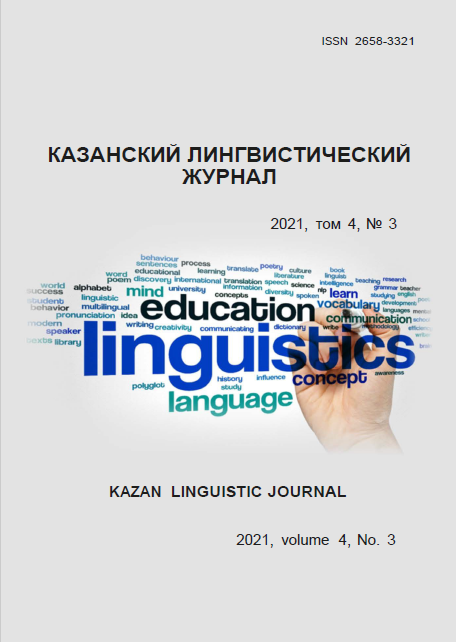Spontaneous and task-based strategy of information perception and their application in modern teaching approaches
https://doi.org/10.26907/2658-3321.2021.4.3.458-465
Keywords:
pedagogical strategies, media psychology, neuroactivity, information technologyAbstract
In a digital society (the situation of the VUCA world), it is becoming increasingly difficult to manage information flows. The problem of using information technologies in the management of economic and communicative, educational and training processes requires a systematic and interdisciplinary approach, but it is especially interesting from the perspective of a new direction of social psychology – media psychology. In the society of information “overstimulation”, when choosing modern pedagogical strategies, it is necessary to take into account the multifactorial nature of communication, a high level of information stress, as well as the features of personal adaptive management of media resources. The experiment conducted in the format of an interdisciplinary study showed that the educational media content can be perceived as a game, entertainment (spontaneous) or task (target). The article describes these strategies. Thus, during the spontaneous process of information perception, the fatigue threshold decreases, the level of interest and involvement is increased, and a positive emotional state is observed. With task-based media consumption, the percentage of attention concentration and concentration increases, intellectual search increases, but the level of information stress and anxiety increases. Pilot studies of these strategies of information perception as a spectral characteristic of the power of EEG rhythms (brain electroencephalogram) are presented for boys and girls. Differences in states were recorded: the low-frequency delta rhythm of the EEG when surfing the content was close to the background value, and during the task process, it increased in the frontal and temporal regions. The power of the EEG theta rhythm increased depending on cognitive (task) efforts. Beta rhythms became more active with increasing complexity of the assessment conditions. These results of the study of neuroactivity in young people allowed us to conclude that there are two pedagogical strategies: spontaneous (game, entertainment) and task (search, problem). Information technologies allow us to apply these strategies in turn, in stages, developing students ' ability for critical analysis and the development of creative abilities: associative thinking, the search for extraordinary solutions.
References
References
Andreeva Yu. V. The boundaries of the information world in the self-assessment of the individual. Zhurnalistika v 2019 g. tvorchestvo, professiya, indus-triya: sbornik materialov mezhdunarodnoо Nauchno-prakticheskoо konferentsii. M.: Fak. Zhurn. MGU. 2020: 255–257. (In Russ.)
Andreeva Yu.V., Polyanina A.K. (2019). Information noise in the space of child development: conceptual justification. Communicologija. 2019; 7(2): 109–121. (In Russ.)
Gir Ch. Digital counterculture. Translated from the English by D.V. Galkina. Gumanitarnaya informatika. Tomsk: Izdatel'stvo TGU. 2004; (1): 27–45. (In Russ.)
Christoff K., Gordon A., Smallwood J., Smith R., Schooler J. Experience sampling during fMRI reveals default network and executive system contributions to mind wandering. Proceedings of the National Academy of Sciences of the United States of America; 2009.






